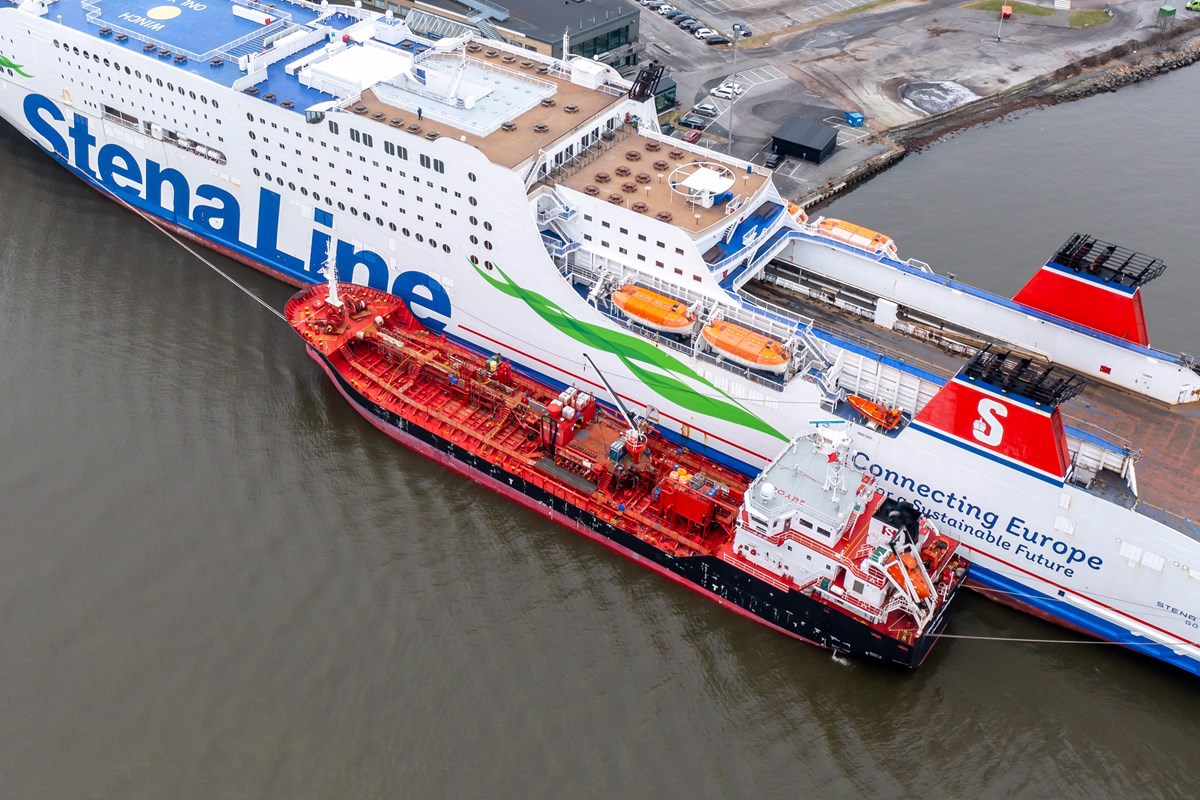Methanol bunkering 'very similar' to MGO or HFO bunkering - Methanol Institute
Methanol's chemical and physical properties are similar to those of conventional oil-based marine fuels, so it can be bunkered using the same infrastructure, according to the Methanol Institute.

PHOTO: First ship-to-ship methanol bunkering of a non-tanker vessel, Stena Germanica, was carried out at the Swedish Port of Gothenburg in January. Port of Gothenburg
Methanol is liquid at room temperature and has a much higher boiling point than other alternative fuels such as liquefied natural gas (LNG), ammonia and hydrogen, which are naturally gaseous. Because of these properties, methanol does not require special containment like cryogenic tanks or compression for storage or temperature control.
Hence, the same infrastructure that is used to store and bunker oil-based marine fuels can be used for methanol bunkering, according to a Methanol Institute (MI) report.
However, "minor and inexpensive modifications" will have to be made to the infrastructure, the report adds. This is because methanol burns at an extremely low temperature and its flames are almost invisible during the day. Infrastructure modifications are needed to prevent fuel vapourisation and to provide "appropriate ventilation, leak detection, heat detection and fire extinguishing equipment."
The report highlights that methanol bunkering can be carried out by truck, by barge and terminal.
Transporting methanol by road has been a common practice for decades - and the same principle can be applied to methanol bunkering by truck, MI says.
According to MI, methanol bunkering by barges is relatively a new concept, but requires similar levels of risk assessment and safety measures as bunkering conventional marine fuels.
Meanwhile, terminal bunkering is best suited for "large vessels operating on fixed routes", the report adds.
By Konica Bhatt
Please get in touch with comments or additional info to news@engine.online





